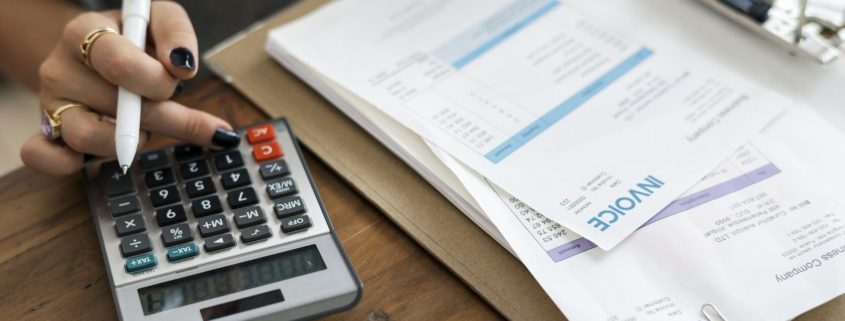Balance Sheet Accounts – Part 2
The bottom half of the balance sheet will contain the liabilities information of the company. The liabilities are important to understand, as it will show how much money the company owes to various sources. Knowing what the company owes is an important aspect to cash flow. It will also help to cut down on surprises.
Below is an example of what the liabilities section of the Balance Sheet will look like and a brief description of each account.
#1 Accounts Payable
This shows how much money the company owes to vendors. It will include all amounts currently owed, whether or not they have come due. If you want to gain a better understanding of how much money is currently due to vendors, you can look at the AP Aging Summary (shown below). This will help you understand the distribution of your Accounts Payable.
#2 Credit Cards
If the company has a credit card, this will show the amount owed as of the date on the Balance Sheet. It is only the balance due on that particular day, so it may not match the last statement.
#3 Loans
This will encompass loans the company currently has, for example a car loan. This account will be principle only. The interest that is paid on every payment will show up on your Profit & Loss statement. The bookkeeper or accountant, will be able to produce a schedule showing how much interest is paid on the loan.
#4 Corporate & Provincial Taxes Payable
This account will track how much the company owes the government for corporate taxes, if any. If money is owed, it will show as a positive balance. If the company has been making installments throughout the year, then this account will have a negative balance in it.
#5 GST
These accounts will track how much money you owe for GST. It is tracked in live time in the books. Therefore, it is important for a business owner to watch this account, as it will avoid unnecessary surprises when the GST is filed.
There will always be two different accounts for GST on the balance sheet. The first is for the GST that has not yet been filed. This is shown as “Total GST/HST Payable” on the example above. This is the amount that the up-coming GST filing will be. The second account is “GST Net”, this account shows the amounts that are owed from already filed returns.
At On-Core, our balance sheet shows GST broken down into both the Sales & Purchases category. This gives business owners a more detailed look at their books.
#6 Shareholder Loan
This account will only show on the Balance Sheet if the company is incorporated. It is used to track how much money a Shareholder owes the company or vise versa.
If the balance showing is negative, the shareholder owes the company. Meaning that they have taken money out of the company. This can happen in many forms, from transferring cash to themselves, or paying for personal expenses with company money. At the end of the fiscal year, if there is a balance owing, the accountant will need to declare a dividend to the shareholder.
It is important that the shareholder pays attention to this account. If they continue to blindly take money out of the company, the amount of income on the dividend may come as a shock.
As you can see, the liabilities section provides you with important insights into your company. It is important to keep the books up to date, so you can use the Balance Sheet. You can find a video here, with more information on this topic.



